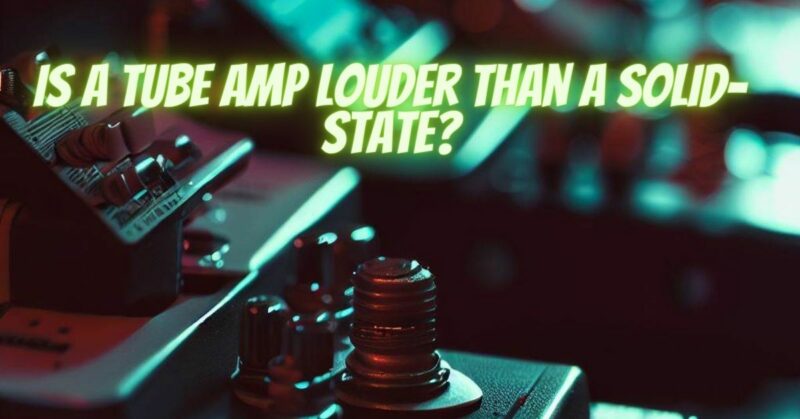The debate between tube amplifiers (tube amps) and solid-state amplifiers (solid-state) has been a perennial topic in the realm of audio enthusiasts. One of the questions that frequently surfaces in this discourse is whether a tube amp is inherently louder than its solid-state counterpart. To answer this query, we must delve into the intricacies of amplifier technology, examining the fundamental differences between tube and solid-state designs and dispelling some common myths surrounding their perceived loudness.
Understanding Amplifier Technology:
Before delving into the volume debate, it’s crucial to comprehend the basic principles behind tube and solid-state amplifiers. Tube amps utilize vacuum tubes (valves) to amplify audio signals, offering a warm and harmonically rich sound. On the other hand, solid-state amplifiers employ transistors for amplification, providing a more precise and often cleaner signal reproduction.
Power Output and Loudness:
One of the misconceptions surrounding tube amps is the belief that they are inherently louder than solid-state amps. In reality, loudness is primarily determined by the power output of the amplifier, measured in watts. Both tube and solid-state amplifiers come in a variety of power ratings, and the loudness of an amplifier depends on its power output rather than the amplification technology.
Efficiency and Sensitivity:
While power output is a crucial factor, the efficiency and sensitivity of speakers also play a significant role in perceived loudness. Some speakers may be more efficient at converting electrical power into sound, influencing how loud an amplifier appears. It’s essential to consider the compatibility between the amplifier and speakers to achieve optimal performance.
Headroom and Distortion:
Tube amps are often associated with a desirable form of distortion characterized by harmonic richness, while solid-state amps are known for their low distortion and high headroom. The subjective perception of loudness can be influenced by the type of distortion introduced by each amplifier type. Some listeners may interpret the harmonic distortion of tube amps as a form of “added volume” due to the harmonic complexity introduced.
Dynamic Range and Clipping:
Dynamic range, the difference between the softest and loudest sounds an amplifier can reproduce, is a critical factor in the loudness equation. Tube amps, with their characteristic compression and softer clipping characteristics, may give the impression of being louder in certain situations, particularly when handling transient peaks in the audio signal.
In the debate over whether a tube amp is louder than solid-state, it’s essential to dispel the notion that amplifier technology alone dictates loudness. The key lies in the amplifier’s power output, the efficiency of the speakers, and the listener’s subjective interpretation of factors like distortion and dynamic range. Each amplifier type has its strengths and sonic characteristics, and the choice between tube and solid-state should be guided by individual preferences, the desired sonic profile, and the specific requirements of the audio system. Ultimately, the quest for the perfect amplifier involves a nuanced consideration of technical specifications and subjective listening experiences.


